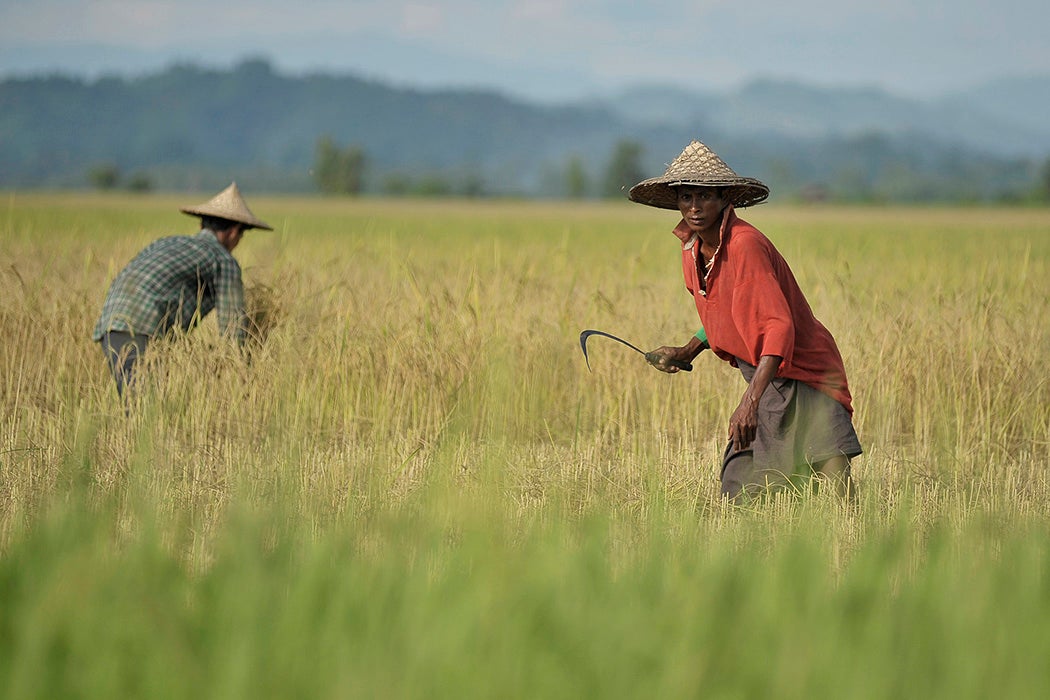When a central power decentralizes its markets, it should ensure the durability of alternative political structures; otherwise, it risks economic and/or political disarray. The agricultural system of Myanmar (formerly Burma)—intrinsically linked with the state’s rice paddies—offers testimony of what happens when deregulation isn’t supplemented with adequate policy. When the state introduced sweeping policy reforms to its rice production operations, it also reinforced economic instability by way of government control.
Economics and resource management scholar Ikuko Okamoto specifies two liberalizations of Myanmar’s rice marketing system history: the first in 1987, the second in 2003. The first, taking place shortly after Myanmar gained independence from British rule, launched a new rice collection method from state farmers. Along with other exogenous factors, the general political tumult strained both the new policies and the agricultural workers.
The second liberalization, part of an effort to open more exports and lift up Myanmar in the international market, also stressed producers and farmers. Producers submitted their harvest to either the Myanmar Agricultural Produce Trading (MAPT) or private contractors hired by the MAPT—fortifying the government’s monopoly over the agricultural market instead of the working peoples.
During both liberalizations, policies issued to alleviate pressure on farmers ultimately backfired. A government-issued procurement quota, introduced early in the process, was meant to spur domestic rice production. However, it accounted little for details: the differences in farm sizes, for one, was not considered—straining medium- and small-scale mills that couldn’t produce the same output as their large counterparts.
These infrastructural disparities had historical implications—many large farms were holdovers from British rule—but they only worsened as other liberalization issues arose. The challenges ultimately led to a number of consequences—one of which compromised the quality of harvested rice: to meet their quotas, many farmers moved their better crops toward a free, unregulated market, delivering lesser product to the government-controlled market.
Weekly Newsletter
Both liberalizations cemented government control over agricultural trade via the very policy targets they meant to address. The public policy to aid a shift towards privatization was ultimately found lacking, creating issues in other economic and political arenas as well as within the rice market itself. Today, in post-coup Myanmar, rice is still very connected to agricultural public policy. Paddy procurement standards, however, continue to be a catalyst for further instability, especially given contemporary pressures. While rice farmers have long been unable to make a profit off their crops, they’re faced with new handicaps such as rising temperatures and changing climates that also threaten general rice production. The lack of policy worsens the situation—and a precedence for a government-regulated price deficit continues to threaten the state’s economic stability.







